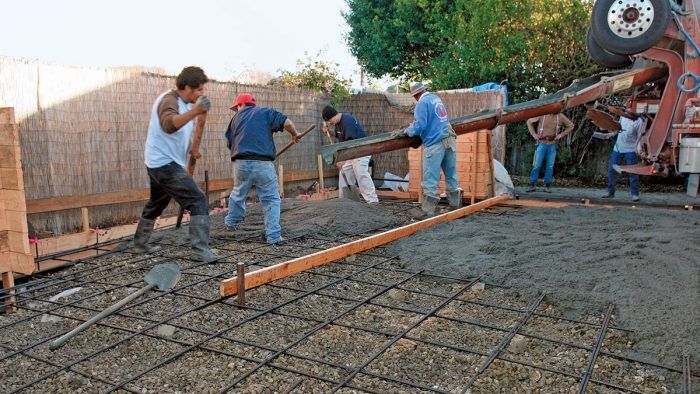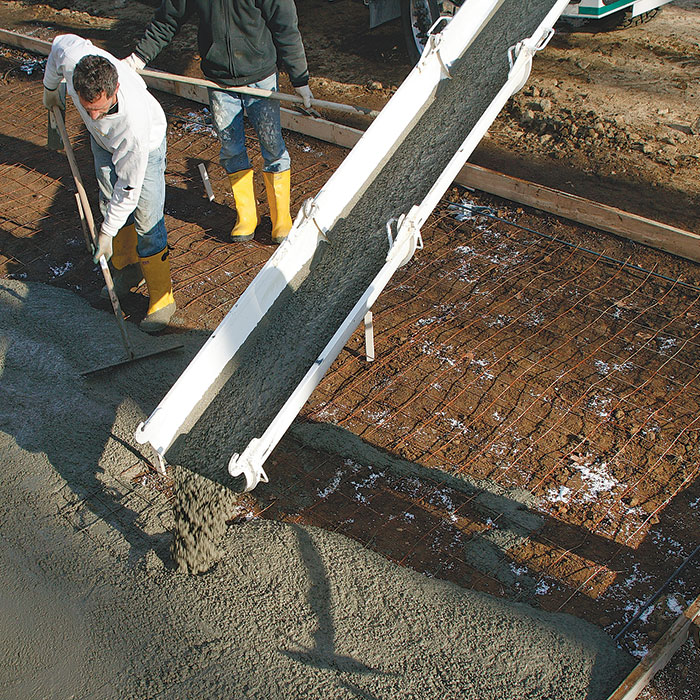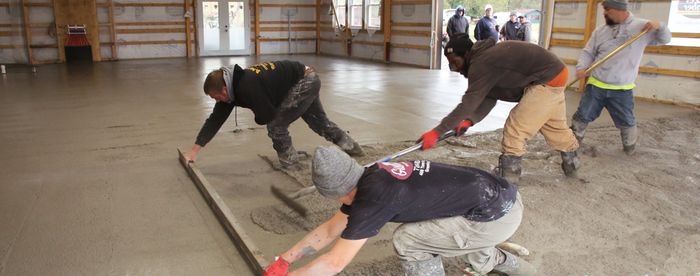Concrete Reinforcement
Whether you use rebar, welded-wire mesh, or both depends on several different factors.

Concrete has great strength under compression. Under tension, however, concrete doesn’t fare so well. For example, as concrete cures, it loses water, which causes it to shrink and crack. Similar cracks open as concrete endures the rigors of changing seasons. Reinforcing concrete ensures that the cracks that do develop don’t go far, which could lead to substantial failure.
To reinforce concrete, you can use rebar or welded-wire mesh. Either material can be engineered to work in almost any application. With a few exceptions, there is no difference in the tensile strength between each material as long as they’re installed correctly. Choosing the reinforcement becomes a matter of the job-site conditions, the availability of the product, and the way you prefer to work.
Rebar
Rebar (image above) is nothing more than common steel rods that come in sizes ranging from #3 (3/8 in. dia.) to #18 (2-1/4 in. dia.). For residential use, #6 rebar is usually the largest size used.
Rebar’s use depends on its application. In a sidewalk, driveway, or slab, rebar is wire-tied into a grid pattern, usually 12 in. or 18 in. on center, then is supported above grade on small piers so that it ends up in the center of the slab. Building codes dictate what size rebar should be used for which job, as well as the appropriate grid spacing.
In walls, rebar specifications also are determined by code. In some areas and uses, you need to install a grid pattern over the entire wall; in others, you need only a few lengths of rebar.
Rebar clearly outperforms welded-wire mesh in one application: When reinforcing piers or columns, rebar offers superior strength and maneuverability.
Cost: $13 per 20-ft. rod (#4)
Welded-Wire Mesh

Welded-wire mesh is a steel grid that can be used in many of the same applications as rebar. Because welded-wire mesh is usually made of lighter-gauge steel, the grid patterns have to be much tighter than with rebar. Mesh can be purchased in either rolls or sheets, but sheets are commonly available only in heavier gauges for commercial work and might not be readily available.
For slab work, mesh performs in much the same way as an assembled grid of rebar. The mesh is unrolled and fixed in place—using small piers—so that it stays in the center of the finished slab. The upside of using mesh is that it’s less labor intensive because the grid is already welded together; no wire-tying is required. The downside of using rolled mesh is that it tends to curl back up, so controlling its location in the slab can be a challenge. Also, because it’s not as heavy, it’s easy to pull it up with rakes during the pour, so it could end up being in the wrong position in the slab.
In most wall applications, two mats can be used to prevent long cracks, but if structural reinforcement is required, mesh might not be an option because it doesn’t come in large-enough diameters to provide the needed rigidity. That said, manufacturers will soon release a mesh that is the equivalent of #6 rebar.
Cost: $2.30 per lin. ft. (48 in. wide)
—Matthew Teague, contributing writer.
From Fine Homebuilding #206




